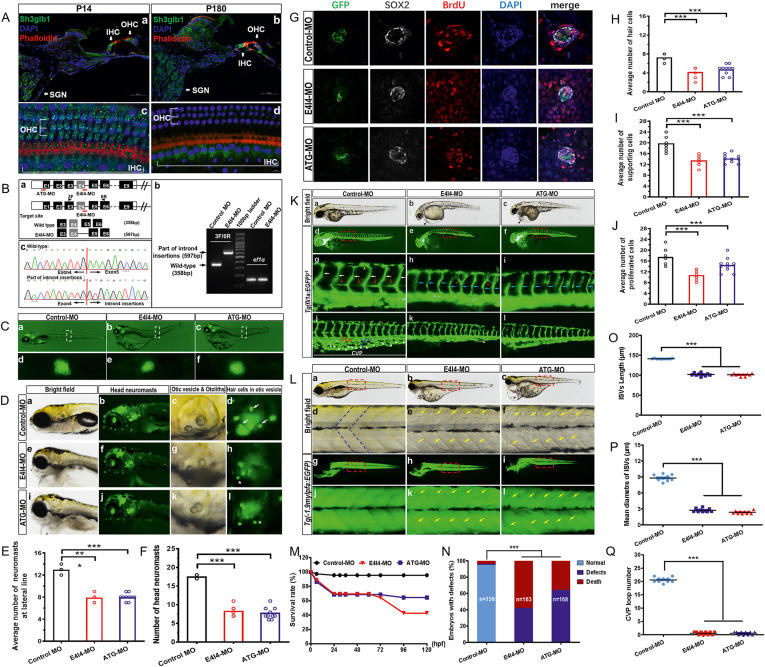
Characterization of SH3GLB1 in the auditory system and its potential role in mitophagy


Mitochondria energize the inner ear to maintain the cochlear potential created by the stria vascularis, assist the motility of outer hair cells, perform synaptic processes, and maintain the spontaneous and sound-driven discharges of the spiral ganglion neurons (SGNs). Mitophagy deficiencies induce the accumulation of damaged organelles and mitochondria in cells and are a primary cause of drug-induced hearing loss.1 SH3GLB1, also known as endophilin B1, encoded by the SH3GLB1 gene, is a multifunctional protein that controls mitophagy, apoptosis, and autophagy. By influencing mitophagy, SH3GLB1 has been linked to the pathophysiological processes of neurodegenerative disorders, including Alzheimer's and Parkinson's disease.2 The role of SH3GLB1 in hearing is currently unclear. This study shows the localization of Sh3glb1 in the mouse inner ear, especially in SGNs and inner hair cells (IHCs), suggesting a role in auditory function. The sh3glb1a morpholino knockdown zebrafish demonstrated a considerable reduction in inner ear hair cells and neuromasts accompanied by malformation of the caudal vein plexus (CVP) and intersegmental vessels (ISV), vascular defects, pericardial edema, circulation defect, and aberrant somite. Collectively, these findings show that SH3GLB1 activity is essential in the auditory, cardiovascular, and muscular systems, where defective mitochondria play a significant role in the pathogenesis of associated diseases.
